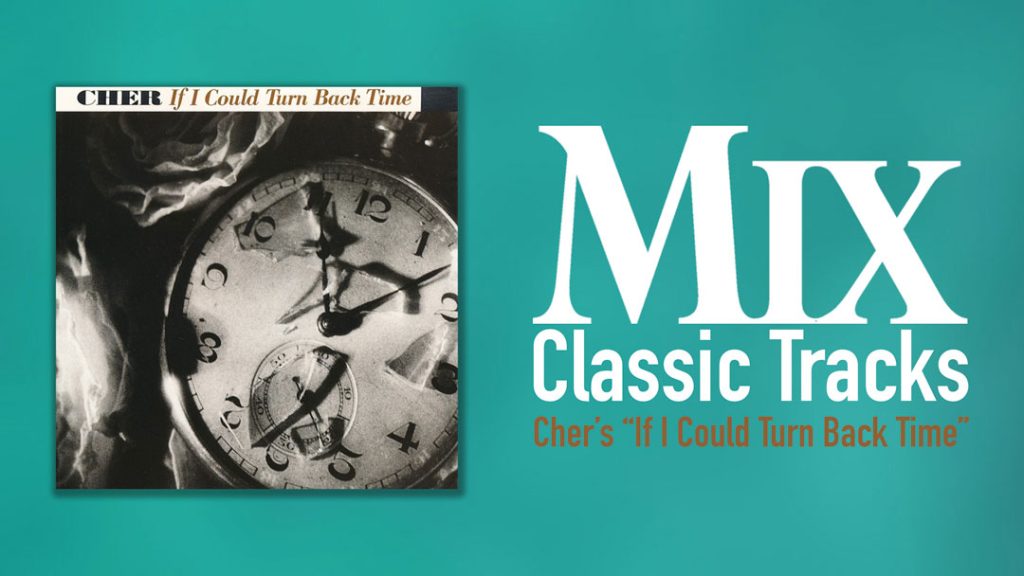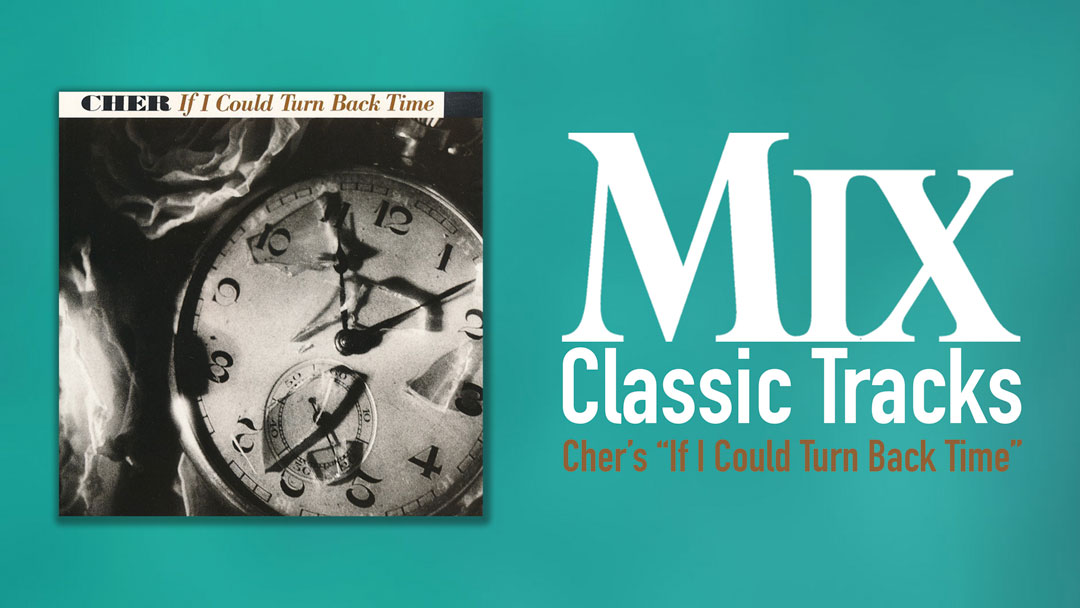
Offering her flawless, sultry vocals and appearing like the sex goddess of her early years, Cher turned back the clock at SNL50: The Homecoming Concert last February with a performance of her 1989 hit song, “If I Could Turn Back Time.”
For those watching, it seemed that not a minute had passed since the song first cried out from her album Heart of Stone, co-produced by the track’s songwriter, Diane Warren, and Guy Roche, who pulled double-duty as a recording engineer, alongside Frank Wolf. Tracking for the album took place at various studios around Los Angeles; Wolf mixed the final release.
Picture this: Guy Roche, having moved from Tahiti in 1983, is an intern engineer at a very small studio in Hollywood called Criterion, where they recorded a lot of demos. One day in late 1984, Diane Warren walks in and says, “I heard you do great song demos.” The two start working together, and not that long after, Roche, still wet behind the ears, finds himself smack dab in the middle of a project with Cher. “I’m still no one, and really green, so it was an amazing opportunity,” Roche says.
The project was done all-analog, with demos laid down first at Criterion, where there was a Stephens console. Roche programmed the instruments, and Warren sang the guide vocals. Memories have become hazy as to who did exactly what and where, as there were so many studios involved—including The Complex, the then-named Village Recorders and Bill Schnee’s facility—though Roche and Wolf narrowed things down, often providing great detail.
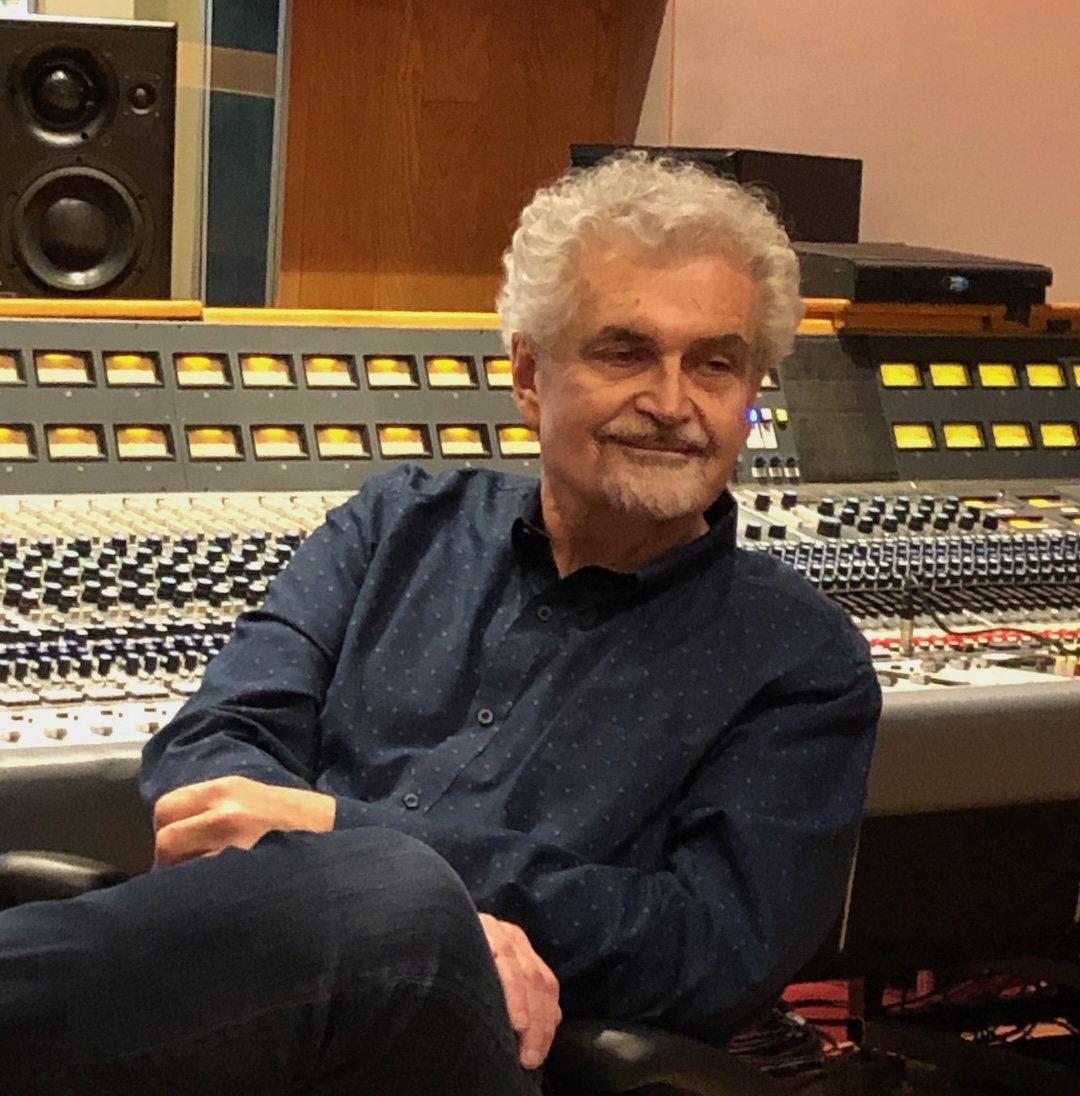
TRACKING WITH BILL SCHNEE
While there are three guitar players credited on the record, Roche believes that Steve Lukather played the lion’s share of the guitar work on “If I Could Turn Back Time,” including the opening and the guitar-strum motif throughout.
Drums (Mark T. Williams) and bass (John Pierce) were cut together at Schnee’s studio on his custom, one-of-a-kind console, which Wolf describes as “clear, not cloudy at all, and really strong and muscular. You can hear it in the record. The drums are really clear; the crispness of the snare when he hits it is, ‘Wow, that’s delicious!’ That had to do with the acoustics in his room and, largely, his console.”
Roche says Wolf went crazy when miking the kit. “Bill, to his credit, had some really great microphones, like Telefunken 251s, which is a great vocal mic— which is a great mic for everything— but he had some that were really beat up, so he used them for toms,” Wolf says in his defense. “That was the only place you could go where you could use that kind of microphone on drums. If you have a pristine one, that’s probably a $15,000 to $20,000 microphone. They are wildly expensive, really famous vocal mics, and he had several that had been so badly dented from drummers hitting them that he just committed them to being drum mics, which is pretty excessive.
“I don’t remember what I had as overheads,” he continues, “but they would have also been tube mics—either another pair of 251s or maybe some Neumann U-67s. It was tube mics all around, and a couple of M 50s as room mics. We could go to town, so we did go to town.”
They also recorded the background vocals at Schnee’s studio, with the talented lineup of Desmond Child, Maria Vidal, Michael Anthony, Robin Beck, Jimmy Demers and Jean McClain. “We recorded in different groups,” Roche recalls. “There were close-up backgrounds with Desmond, Maria and Jean to achieve a more focused sound, and we did more tracks with all of them together. Also, we recorded with the mics 20 feet away to get the room sound. We tried all sorts of different things.”
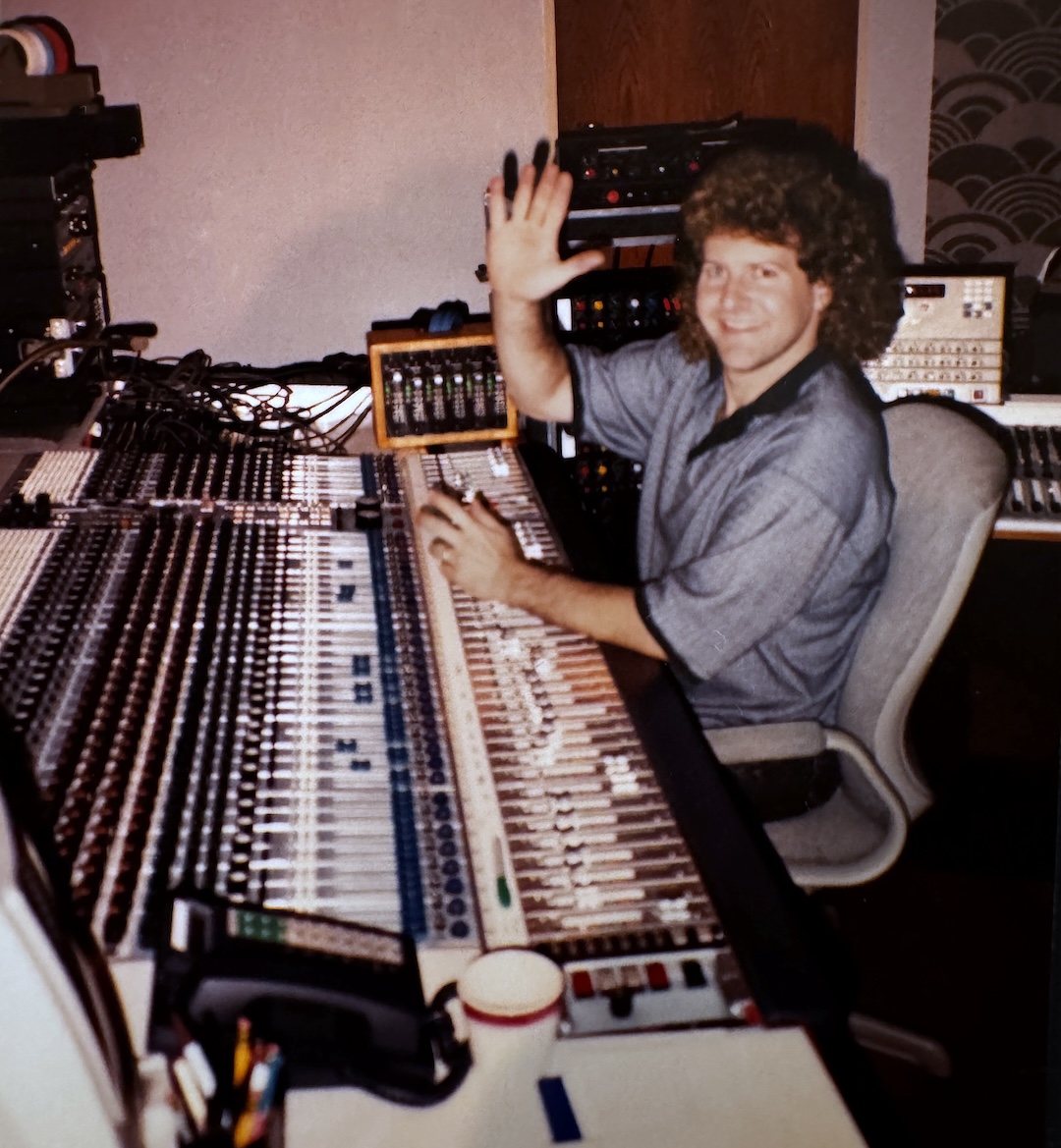
BRINGING IN CHER
The tracks were all cut with Warren’s vocals before Cher had even committed to recording the song. Warren has often told the story of how she got down on her knees to beg a noncompliant Cher. Roche was there, and recalls the whole exchange.
“Cher said, ‘I’m leaving. I hate this song,’” he says. “Diane was actually on the floor holding onto her leg, and then John Kalodner (Geffen Records’ head of A&R) stood up and said, ‘I want you to try the song.’ He actually sat on a chair, I would say, like, two feet from where she sang. She sang it to the end of the second verse, and she didn’t jump up and down, but she figured it out.”
Wolf remembers that first time Cher sang it at the Village, with Kalodner staring up at her like, as he describes, a lovestruck schoolboy: “Guy and Diane were there, and John wanted to sit in the room with her just on a straight-back chair, 10 feet in front of her with no head pumps. That’s because he wanted to completely soak up the sound of her voice all by itself. It was kind of amazing; she’s got that iconic voice and, you know, she opens her mouth and she sounds just like Cher. But to hear a vocal without the music seems sort of counterintuitive, right? But there it was, and he sat there in a straight-back chair with his feet flat on the ground and his hands in his lap, just staring at her, and he loved it.”
She obviously saw the merits and agreed to record the vocals with a U47 tube mic. “She sang it through with a track a few times, and then we’d work on the first verse and chorus, or just the first verse, and do several takes, and the same thing with the chorus, and so on and so forth, working right through the song,” says Roche, who spent the night comping her vocals. She returned the following day, cut some more, and he added a bit of Publison.
“Then again, as we do with pretty much everyone, we sort of pick the best of the takes and glue one together and see if she likes it,” he explains. “Assuming that she and Kalodner and everybody else liked it, that becomes the vocal.”
Classic Tracks: Pat Benatar’s “Love Is a Battlefield”
Roche says that after the two days of vocal sessions, he never had direct contact with Cher again. Contact was either through her management or Kalodner, and he assumes when it was time for her to hear a rough mix of their work, if she was in L.A., they would message it over to her. If she was out of town, they would overnight it to her by FedEx, with days of waiting between communications. Often it was the same critique: “More guitar!”
Roche says that initially the song was in a more pop-synth vein, but Cher definitely heard a rougher rock production—and they couldn’t just turn the guitar up; she wanted more guitar parts. Roche recalls that she would get down to specifics, along the lines of, “I think we should add more guitar in the B section of the second verse.”
“And when she makes a call like this, you have to say yes. She’s the boss,” Roche explains. “She liked more guitar. Funny that she fought tooth and nail to not sing the song at first!” Wolf agrees: “Her instincts were right. When you hear it, it’s a guitar song, and it kicks ass.”
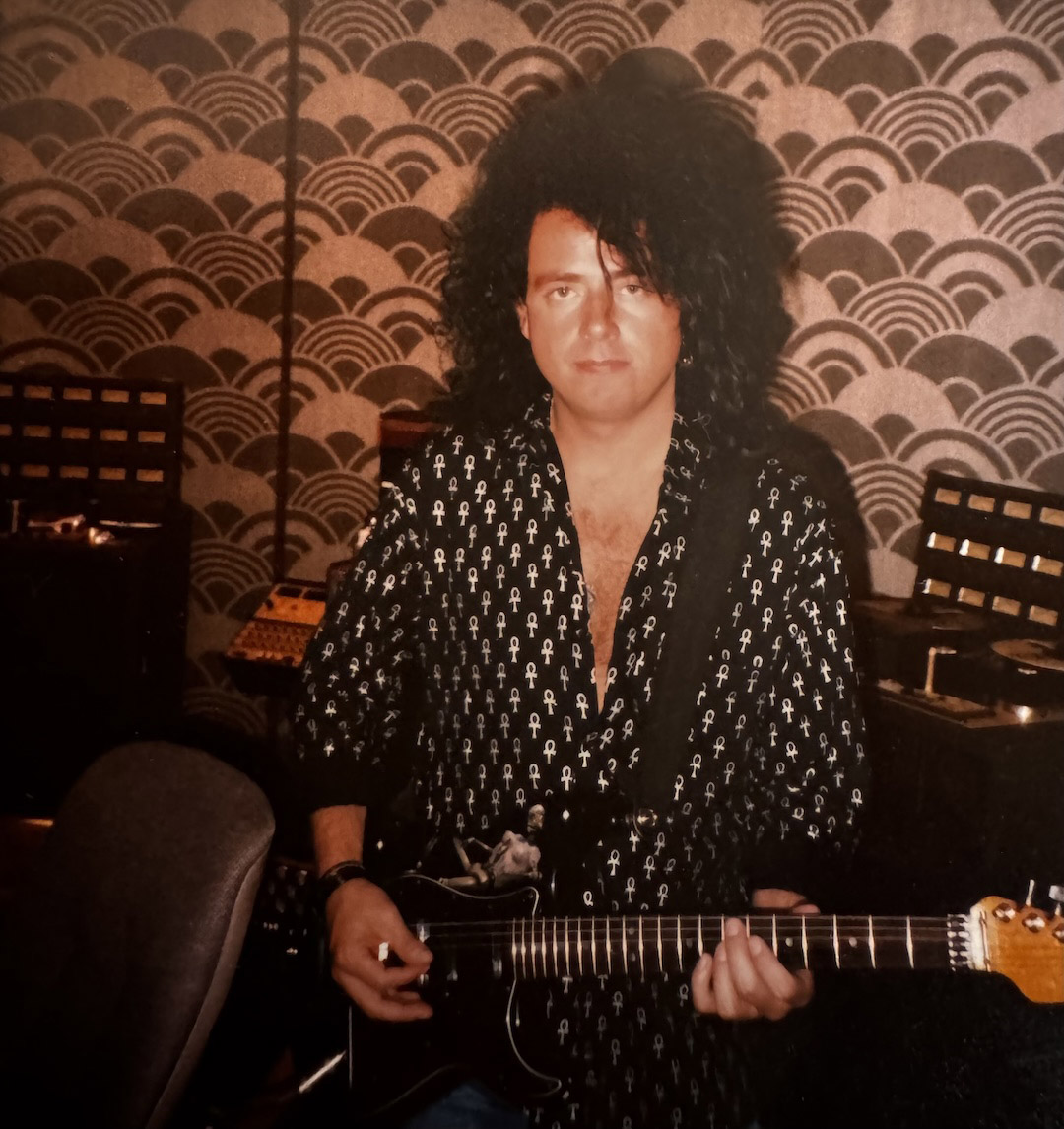
Roche believes they had to call Lukather back in two or three times for short sessions. Lukather confirms over email with his classic laugh: “Hahaha. Yes. I do remember coming back in a few times and adding more. Guy was right. How much more could I have done? Haha. I do remember having fun working with Guy and Diane and Cher on all that stuff way back when. I may have suggested, ‘Turn it up then.’”
Roche mentions the grueling hours of making slaves and the failed slaves that didn’t sync up or were not going the right speed at 4 o’clock in the morning, “when you are trying to make a new slave because a guitar player is coming to play two bars of guitars and it doesn’t work until 8 a.m. because the machines didn’t sync up together. Producers today have no idea how easy they have it.”
MIXING AT THE COMPLEX
The mix was done at the Complex, owned by George Massenburg and featuring his custom console. Both Roche and Wolf remember that even during the mix, Cher called for “more guitar,” and Lukather would return to add another something.
“When we mixed, we had something like five machines running. It was wild,” says Roche, who was very involved in the mix. “It was kind of crazy because to get five machines to work all day long without breaking down…. When you pressed Rewind, you had to wait five minutes before it actually went back to the front of the song for it to start again, and then it took 20 minutes for all of them to lock up. It was kind of a nightmare.”
One funny story that Wolf relays actually did quiet the room for a few hours. It had to do with Roche’s parrot, DX (named for the DX7 synthesizer), who would ride to the studio with Roche on his motorcycle, tucked into his zippedup jacket. DX would then take up position atop a mic stand. But on this particular day, in the middle of a mix, the automation in the console died. They all looked around and asked, “What happened?” Then, Wolf says, they noticed that DX was off his stand. “He had gone in front of the console and had chewed through the ribbon cable that connected the console to the computer.”
Discover more great stories—get a free Mix SmartBrief subscription!
Wolf says that back in the late 1980s, a mix took at least a day and a half. “The challenging part was the physicality of getting everything set up,” he says simply. “If they are 24-track machines and there’s five of them, and say they’re not all full, but five times 20 is 100 tracks. In analog days, that’s a lot of tracks. In Pro Tools, that’s nothing, but in those days, that was a lot. And you also had to have reverbs, delays and effects, so you had to have a place to bring those back. So 100 turns into at least 110 or more.”
Listening back to Cher’s highest chart achievement of the ’80s, hitting Number 3 on the Billboard Hot 100, Wolf says, “I had forgotten how well of a crafted song, arrangement and production it was. I have to say, I think the mix sounds great. Diane wrote a great song, and Cher sings the hell out of it! Everything about it is pretty darn cool.”
